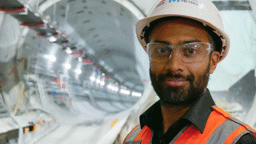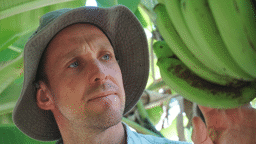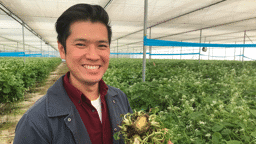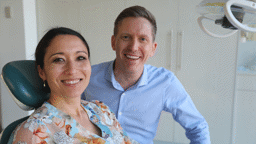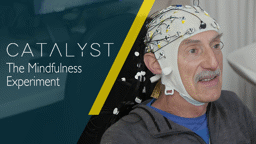Secondary Catalogue
- Content Catalogue
- Secondary
- Catalyst
×
Categories
- Careers and Work Readiness
- Functional Skills
- Industry
- Agriculture, Environment and Animal Care
- Business and Administration
- Catering and Hospitality
- Childcare and Education
- Construction
- Creative and Design
- Digital
- Engineering and Manufacturing
- Hair and Beauty
- Health and Science
- Legal, Finance and Accounting
- Protective Services
- Sales, Marketing and Procurement
- Social Care
- Transport and Logistics
- Personal Development
- Secondary
- Art & Design
- Citizenship
- Computing and ICT
- Dance
- Design & Technology
- Drama
- English
- Food Technology
- Geography
- History
- Mathematics
- Modern Foreign Languages
- Music
- Personal, Social, Health, and Economic Education
- Philosophy
- Physical Education
- Religious Education
- Science
- Teacher Professional Development
Series: Catalyst
Building Greener Cities
Cities are one of our greatest inventions, they bring us together and drive wealth - but as more of us flock to live and work in them, we need to find ways to make them greener, more sustainable and efficient places to live.
Physicist Dr Niraj...Show More
Cities are one of our greatest inventions, they bring us together and drive wealth - but as more of us flock to live and work in them, we need to find ways to make them greener, more sustainable and efficient places to live.
Physicist Dr Niraj Lal explores some of the engineering solutions driving change. To see how we’ll keep our growing population moving he visits the construction site of the largest public transport system ever undertaken nationally and discovers how engineers are finding ways to replace concrete - one of the biggest CO2 emitters in the world – with greener alternatives. Show Less
How Your Food Works: Part 1
With a team including a chef, chemist and dietician, this fun and fascinating 2-part series take a closer look at the foods we all love, with some surprising results. Exploring the latest scientific research behind how they are grown, processed...Show More
With a team including a chef, chemist and dietician, this fun and fascinating 2-part series take a closer look at the foods we all love, with some surprising results. Exploring the latest scientific research behind how they are grown, processed or cooked, the series illustrates that understanding how food works can help us eat healthier (and tastier!).
The first episode profiles a variety of one of the world’s most popular fruits, the banana, currently under threat of extinction from a fungal disease. Visiting the scientists cultivating new varieties of disease resistant bananas, it appears that the perfect combination of flavour and texture is within their sights. The traditional craft of fruit preservation is supersized in the production of canned baked beans – and the team uncovers whether or not the process can actually increase the nutritional value of some canned goods. Physics and biology come into play in the science behind cooking the perfect medium-rare steak. A world of cascading chemical reactions is unveiled in a revolutionary new experiment that looks at how to get the flavour and texture of your steak just right. Show Less
How Your Food Works: Part 2
With a team including a chef, chemist and dietician, this fun and fascinating 2-part series take a closer look at the foods we all love, with some surprising results. Exploring the latest scientific research behind how they are grown, processed...Show More
With a team including a chef, chemist and dietician, this fun and fascinating 2-part series take a closer look at the foods we all love, with some surprising results. Exploring the latest scientific research behind how they are grown, processed or cooked, the series illustrates that understanding how food works can help us eat healthier (and tastier!).
In the second episode, cutting edge science helps us to freeze fish so that they taste almost as good as when fresh. To see how far technology has come, a panel of sashimi lovers are subjected to the ultimate taste test: to see if they can taste the difference between fresh and cryogenically frozen kingfish. The scoop on why humans are hard-wired to desire junk food could be answered by the gelato-making process and a simple, mathematical formula. A specific ratio of carbohydrates, fats and salt can deliver the ‘bliss point’, targeting our brains’ reward system, and releasing the endorphins that makes us feel good. In stunning vineyards, sparkling wine is put under the microscope in the hope that every year will deliver a good vintage, and the chemistry of different hot and spicy foods provides some startling insights. Finally, a better understanding of some unusual crops could see them become the supermarket produce of the future. Show Less
Teeth Clinic
A special that explores common dental complaints at a special pop-up clinic – unveiling surprising secrets that could reduce the need to drill and fill. A team of top dental experts look at the emerging links between oral and general health,...Show More
A special that explores common dental complaints at a special pop-up clinic – unveiling surprising secrets that could reduce the need to drill and fill. A team of top dental experts look at the emerging links between oral and general health, and reveal how cutting-edge technology is redefining the trip to the dentist (especially important for those who are fearful!). Show Less
The Mindfulness Experiment
Across the world, mindfulness has become a multi billion dollar industry, but what is the truth about the claims being made for it? Working with a team of researchers, fifteen ordinary Australians, take part in a revealing scientific experiment...Show More
Across the world, mindfulness has become a multi billion dollar industry, but what is the truth about the claims being made for it? Working with a team of researchers, fifteen ordinary Australians, take part in a revealing scientific experiment – to see if practicing mindfulness can help treat conditions like chronic pain, anxiety and stress – conditions that affect millions of us. Show Less
